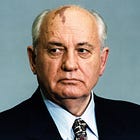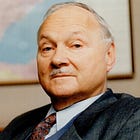The New World Order
We often hear that global governance 'just evolved', a spontaneous patchwork sewn together after wars, crises, and emergencies. But that’s not quite the case. It has a clear lineage, consistent strategic methods, and a historical blueprint most were deliberately never taught in school.
Today, when a 'civil society organisation' starts hurling bricks at police with impunity, we watch the outrage unfold. Many question why, and some even suspect paid agitators are at play. But the shock is translated into a 'moral emergency' on the news, and the ensuing outcry demands that 'something must be done'.
That is step one.
Shortly after the outrage, a respectable Non-Government Organisation (NGO), typically with General Consultative Status at the United Nations, steps forward to 'place the item on the agenda' — because something, clearly, must be done. They carefully define the issue, frame it in terms of 'the common good', and work to create a plan of action along with their fellow public and private partners in the Trilateral Commission.
That is step two.
Then — if the issue relates to the environment — the global modelling agencies (IIASA, IPCC, etc) enter the scene. They establish a 'best available scientific consensus', giving the solution the aura of scientific validity, inevitability, and urgency. And this science is 'settled', we are told, in spite of it being merely a ‘consensus’.
That is step three.
The World Economic Forum and its UN/national partners then strategise to operationalise the plan for ‘the common good’.
That is step four.
The outcome is commonly a new organisation, or a forum more specialised than the prior. Hence, World3 led to the IIASA, and the IIASA led to the IPCC.
That is step five.
And those five steps constitute Wolfgang Reinicke’s solution, outlined through the Trisectoral Network — a report with which members of the WEF and the Trilateral Commission cooperated. It is also, of course, what was previously detailed technologically through The Black Box, and morally through Cloaked in Care.
However, this strategic cycle is not new. It was outlined with clarity at the 7th World Congress of the Comintern in 193512. There, the 'United Front' strategy was set: gradual, step-by-step implementation of socialism, often through the enemy's own institutions, with Lenin's New Economic Policy forming the foundational governance aspect. The specific inclusion of CSOs, incidentally, was precisely what Dimitrov outlined in 1935. These were to be controlled fronts, ultimately operated by the Communist Party.
Yet the roots run deeper still. Lenin’s New Economic Policy, through Bukharin, traces directly back to Eduard Bernstein, the Marxist revisionist architect of evolutionary socialism. Bernstein, in turn, was influenced by Julius Wolf. And it was Wolf who, in the very same document from 1892 described a gold-based clearing mechanism that would eventually find its institutional home in the Bank for International Settlements.
But Wolf’s vision extended beyond finance. His proposed centralised management of economic flows gradually crept into finance, governance, and beyond — not least through Eduard Bernstein later that decade.
Meanwhile, Alexander Bogdanov took Marxist materialism and retooled it into 'empiriomonism' — a quasi-monistic, systems theory approach to governance. In Bogdanov's model, the monetary aspect — thus, dialectical materialism — was just one potential perspective one could apply. See, just about any could be applied — provided it aligns with ‘the common good’. Consequently, Bogdanov outlined a perspective shift from Marx and Engel’s materialistic monism to one which would fit the model, provided it could be justified as a ‘common good’.
The first true implementation of monetary monism came with the 1844 Bank Charter Act in Britain, granting the Bank of England a gradual monopoly on money issuance, albeit backed by gold. From there, the long march toward the BIS and international financial coordination began — with Wolf’s 1892 solution built into the BIS’s original design.
Fast forward to today: in 2023, the Fabian Society's In Tandem proposal called for fiscal and monetary policy to be fused into a single mechanism — the Economic Policy Coordination Committee (EPCC). Yet just months earlier, Liz Truss and Kwasi Kwarteng were booted from power in Britain for daring to unveil a budget without first 'clearing it' with the Bank of England. Democracy, subordinated to technocracy.
Marx and Engels’ vision was about materialistic monism — control of the material base — mediated by a third party. In 1848, they explicitly called for centralised credit under a singular state bank. Later, Albert Pike in Morals and Dogma (1871) described the 33rd-degree Freemason as the balancer of equilibrium between oppressor and oppressed — a small, controlling elite to manage society’s infinite complexities.
The 'mediator' idea is the critical mechanism. It is the elite position above the conflict, claiming neutrality, managing the dialectic without ever resolving it. In the West, Woolf and Zimmern fused this idea into the League of Nations. In the East, Lenin and Bukharin operationalised it through the NEP. Today, the General Consultative NGOs have inherited the role.
This mediating class justifies itself through Critical Theory, identifying eternal oppressor-oppressed dynamics that demand elite management. It spread through the G77/NIEO Third System movement in the 1970s, through Gorbachev's Perestroika, through Blair's Third Way, through Reinicke's Trisectoral Networks — and finally into today's 'multi-stakeholder governance' system.
Today, it is the NGOs, the WEF, the UN agencies, and the central banks — acting in concert, managing the conflict, inching society ever closer to scientific socialism.
However, in context of Wolf’s system, which underwrites the entire architecture, and as the Fabian Society made clear in 2023, the ultimate authority comes down to the entity which controls the global flow of credit. And in this context, there is no third party. There is no mediating entity — per Wolf — managing the dynamic between the central bank and the State. The one who controls credit controls the entire system, directly.
Incidentally, the Global Interdependence Center — hosted by the Federal Reserve Bank of Philadelphia — proudly displays Commager's 1975 Declaration of Interdependence, openly calling for a 'New World Order'.
What we are living through is not chaos. It is not incompetence. It is a managed transition.
It is the slow, deliberate realisation of a vision set in motion long ago — a system where financial control, governance control, and social management are fused into one adaptive, cybernetic structure. The slow birth of scientific socialism, managed by those who sit above the dialectic, dictating 'the common good'.
We are not watching history unfold. We are experiencing a transition to global scientific socialism — justified by the 'common good', and quantified by unchallengeable 'scientific consensus' that can shift as needed, and frequently does.
And it can all be traced back — to 1844.














